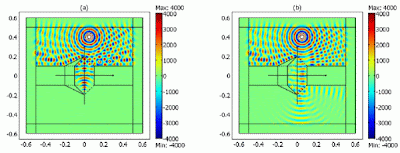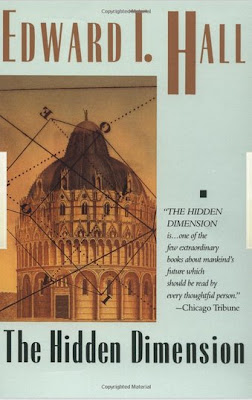 Quintessence
Quintessence, the post about
Kind of Blue and
Mile Davis, got some reaction from readers as some said other gems like
A Love Supreme and
Blues & the Abstract Truth, among others, are just as good as
Kind of Blue (they have a valid point) even though I still consider
KOB to be No. 1 by a very close margin.

Before getting to an all too short list of great albums/artists, I feel it necessary to mention two musicians who are almost never recognized as giants in the jazz pantheon,
Oliver Nelson and
Eric Dolphy. Nelson, of course, created
The Blues And the Abstract Truth, a magnificent album showcasing a group of gifted musicians playing original compositions penned by Nelson. Oliver's solos in Blues (soprano/tenor sax) are architectural masterpieces constructed with exquisite precision, passion and patience, a style Bach would have appreciated given the kind of music Bach created. The other notable thing about Oliver was the quality of his work. Had he lived, Duke
Ellington would have had company as being at the top of the list of great American composers. (Check out
Stolen Moments to see why. It's on TB&
TAT.)
 Eric Dolphy
Eric Dolphy, who played with Nelson on several albums (including Blues), had a melodic sense unlike anyone else. Classically trained,
Dolpy's solos (flute, alto sax, bass clarinet) have to be heard to be appreciated as he pulled out hidden harmonic relationships in ways which have never been duplicated by anyone playing jazz AFAIK.
Both died way before their time.
IMHO, an all too brief list of great albums/artists one should have if stranded on a desert island with proper phonic equipment. :)
- A Love Supreme, Crescent - John Coltrane
- Blues & the Abstract Truth - Oliver Nelson
- Milestones - Miles Davis
- Kind of Blue - Miles Davis
- Four & More - Miles Davis
- ESP - Miles Davis
- Bird
- Dizzy
- Sonny Rollins
- Chick Corea
- Duke Ellington
- AJA - Steely Dan
- Gerry Mulligan & Bobby Brookmeyer
- Waltz for Debby - Bill Evans
- Gill Evans - Sketches of Spain and Into the Cool
- Charles Mingus
- Bach's Goldberg Variations - The young Glen Gould
- Electric Ladyland - Jimi Hendrix
- Dave Brubeck at Carnagie Hall/1963
- God Must Be a Boogy Man - Joni Mitchell
- Hot Rats - Frank Zappa
- Early Bob Marley
- Synchronicity, Ghost in the Machine - The Police
- Early Bob Dylan
- Sly & the Family Stone
- Crosby, Stills, Nash & Young
- Harvest - Neil Young
- Elephant Mountain - The Youngbloods
- Stravinsky
- Retrospective - Buffalo Springfield
- John Barleycorn Must Die - Stevie Winwood
- Songs in the Key of Life - Stevie Wonder
- Off the Wall - Michael Jackson
- Disraeli Gears, Wheels of Fire - Cream
- Staircase + Various Trio Works - Keith Jarrett
- Ornette Coleman
- Gimme Shelter - Rolling Stones
- Mississippi Delta Blues - Various Artists
- Real Bluegrass Music - Various Artists
- Real Irish Music - Various Artists
- Indian Ragas - Ravi Shankar, Ali Akbar Khan
- Vintage Santana
- African Drumming
- John Mayall & The Blues Breakers
- Stevie Ray Vaughn
- Eric Clapton playing the Blues
- Wired - Jeff Beck
- Led Zepplin
- Steve Reich
- Bach Organ Pieces
- Leonard Cohen
- Billie Holiday
- Tommy - The Who
- Sun Ra
- Dr. John
- Jimmy Smith
- Oscar Peterson
- Muddy Waters
- Weather Report
- Sgt. Peppers - The Beatles
- Revolver - The Beatles
- Mozart, Various works
- Brahms - Various works
- Phillip Glass - Various works
- The 9th - Beethoven
- Scriabin
- Samuel Barber - Adagio for Strings
- Stravinsky - Rite of Spring
- Aaron Copeland - Various works, Applachian Spring, Fanfare for the Common Man
- Bach - Six Suites for Cello, Yo Yo Ma
- Ravel - Bolero (An old chestnut)
- Paul Hindemith - Various works
- Chopin
- Bartok
- Schoenberg
- Webern
- Mahler - Symphony No. 8
- Allman Brothers
- Talking Heads - Stop Making Sense, 77
- U2 - The Joshua Tree, Achtung Baby
- Early Janus Joplin
- John Cage (Think of Merce Cunningham)
- Count Basie
- Art Blakeley & the Jazz Messengers
- Blue Note Artists, Horace Silver, Lee Morgan, Freddy Hubbard etc., etc.
- Monk
- Early Ray Charles
- Phil Woods
- Lee Konitz
- Ahmad Jamal - Poinciana
- The Roots
- MJQ
- Buddy Rich Big Band
- Peggy Lee - Give Me Fever
- Chuck Berry (need I say more?)
- Early Elvis
- Jerry Lee Lewis
- Little Richard
- Joe Williams with Count Basie
- Sinatra
- The Mothers of Invention
- The Grateful Dead (The long jams - We are the World, Playing in the Band, Dark Star etc., etc.)
- The list will grow as it, like links, never ends. :) Great Books should be next but not now. Also, please add more as I know I have forgotten to include many really good ones that have slipped my feeble mind. :)
 "The detailed chemical structure of a single molecule has been imaged for the first time, say researchers. The physical shape of single carbon nanotubes has been outlined before, using similar techniques - but the new method even shows up chemical bonds.
"The detailed chemical structure of a single molecule has been imaged for the first time, say researchers. The physical shape of single carbon nanotubes has been outlined before, using similar techniques - but the new method even shows up chemical bonds. Pentacene as you've never seen it before
Pentacene as you've never seen it before

























